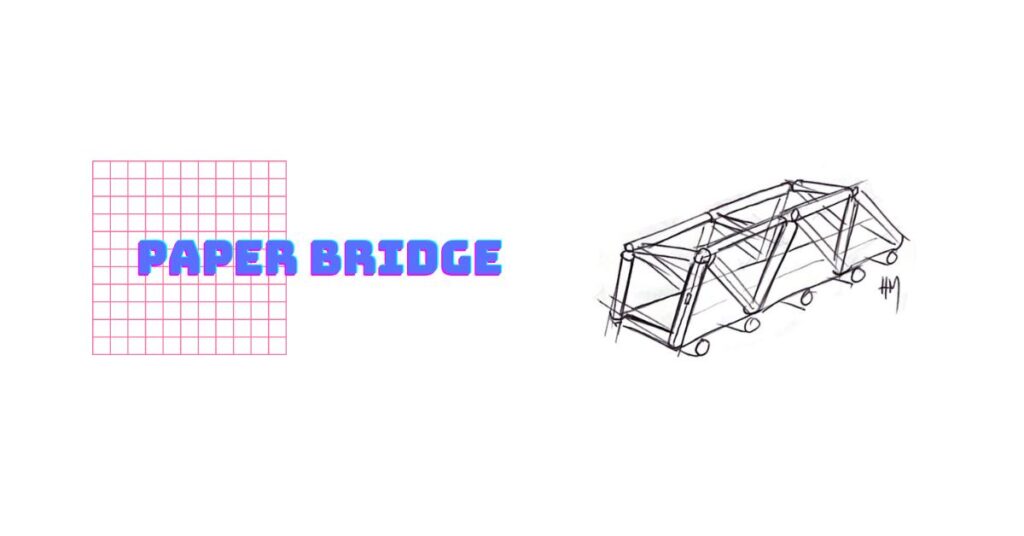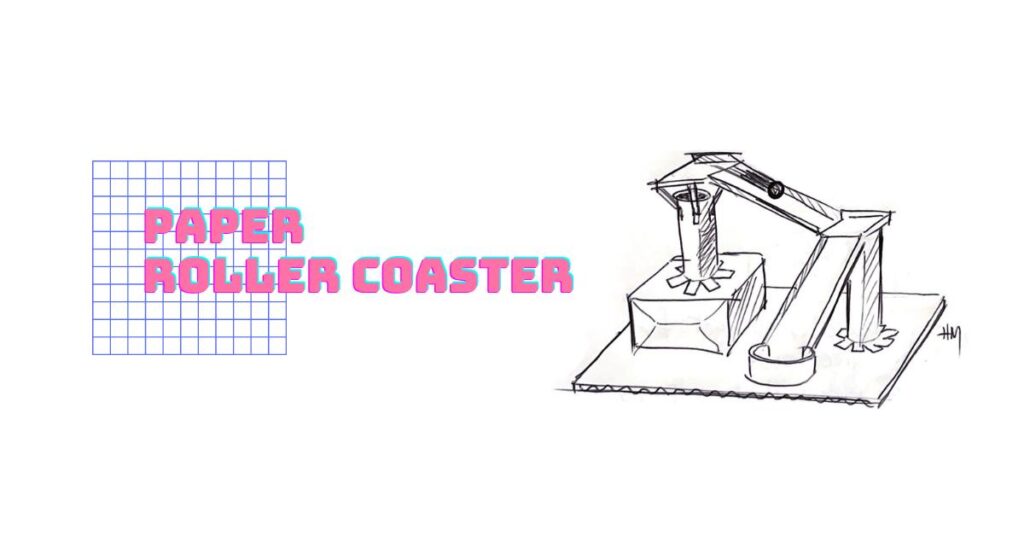As a parent and educator, I have witnessed the magic of engineering at play when I see the look of wonder on a child’s face as they watch a cardboard airplane soar through the makerspace.
Introducing children to engineering early on can help spark creativity, problem-solving skills, and an interest in how things work, but it can be overwhelming for many parents. To help parents, I share here my three favorite creative activities to do at home to spark any kid’s interest in engineering.
Throughout my teaching and parenting journey, I have discovered numerous activities that transform ordinary afternoons into explorations of the world of engineering. And paper engineering is one of my favorites, as it is simple yet incredibly versatile.
We can create endless possibilities with paper, tape, and a dash of imagination.
One of my most memorable teaching experiences was when I challenged my 7th-grade class to build paper bridges. Students filled the room with excitement as each group brought their unique ideas to life. Some created bold and colorful bridges, while others delved into intricate designs.
Whenever I do this activity, I have tons of fun. I’m reminded that the love for engineering is not limited by age and can inspire creativity and ingenuity at every level.
Table of Contents
Developmental Benefits of Paper Engineering Activities:
STEM/STEAM activities at home can be fun and educational, especially with paper engineering, combining science, technology, engineering, art, and mathematics.
It helps develop spatial reasoning, fine motor skills, problem-solving, and creativity.
And the best part? It requires the most basic materials – paper and tape – items you likely have lying around the house right now.
Moreover, paper engineering challenges them to solve problems creatively, whether figuring out how to stabilize a structure or how a specific fold impacts the overall design. And let’s not forget the boost to creativity – turning a flat, two-dimensional material into a three-dimensional creation is an incredible outlet for imaginative expression.
My Top 3 Creative Activities to Do at Home to Spark Interest in Engineering
So, let’s dive into the three paper engineering activities you can do today in your home, where creativity is the only limit.
As you read about them, remember that these activities are flexible. Parents can simplify it for younger children or make it more complex for older ones.
The goal is to have fun and learn, not to achieve perfection on the first try.
Are you ready to get started? Here we go.
1. Paper Bridge Challenge

The goal is to construct a bridge from paper that can support weight. This activity challenges kids to think like engineers, considering strength and functionality in their design.
Materials Needed:
- Several sheets of paper (A4 or letter size)
- Tape
- Books or boxes to create a gap in the bridge
- Small weights (like coins or toy cars) for testing
Step-by-Step:
- Set up two supports (books or boxes) a fixed distance apart.
- Using paper and tape, construct a bridge spanning this gap.
- Test the bridge’s strength by gently placing weights on it.
Tips for Success:
- Experiment with different folding techniques, like accordion folds or rolled paper, for added strength.
- Ensure the ends of the bridge are securely taped to the supports.
Reflection Questions:
- “What makes a bridge strong, and how can we apply that to our paper bridge?”
- “How does the way we distribute weight on our bridge affect its strength?”
- “Why is structural integrity crucial in the design of our bridge?”
2. Paper Roller Coaster Challenge

The challenge is to create a paper roller coaster that a marble or ball can successfully travel along from start to finish.
Materials Needed:
- Card paper strips (around 2 inches wide)
- Card boxes. (i.e., cereal boxes)
- Tape
- A marble or small ball
Step-by-Step:
- Use the paper strips to create tracks and loops. Bend the edges of the strips to form walls while giving structure to the piece.
- Secure the tracks to one another with tape to a wall or board.
- Test and adjust the roller coaster to ensure the marble can travel smoothly.
Additional Challenges:
Encourage adding complex elements like loops, jumps, or turns.
Reflection Questions:
- “How does our roller coaster’s design affect the marble’s speed?”
- “How does gravity affect the movement of the marble on our roller coaster?”
- “Can you explain how momentum impacts our roller coaster’s speed?
3. Paper Tower Challenge

The task is to build the tallest possible tower using only paper and tape.
Materials Needed:
- Multiple sheets of paper
- Tape
Step-by-Step Guide:
- Roll or fold paper into sturdy columns.
- Connect the columns with tape to build height.
- Keep testing for stability as the tower grows taller.
Competition Element:
- Turn it into a friendly competition, seeing who can build the tallest tower.
Reflection Questions:
- “What strategies can we use to make our tower taller without falling over?”
- “Why is weight distribution important in keeping our tower upright?”
- “What role does foundation strength play in our construction?”
- “How does a stable base contribute to the overall strength of our structure?”
Tips for Parents
Each activity offers a unique blend of learning, creativity, and fun, making engineering concepts accessible and exciting for children.
Before starting these activities, keep some things in mind. Let me share some tips to ensure you have a great time with your kids!
Skill Check:
Start with straightforward projects to introduce or revisit basic folding skills. This can be a great warm-up and helps you assess your child’s current level and comfort with paper crafting.
Home Set-Up:
It’s easier to enjoy the experience with a suitable tape dispenser.
Imagine this – effortlessly tearing off the perfect length of tape without struggle. That’s the magic of a good tape dispenser! It makes your task more manageable and adds to your overall experience.
Set up a dedicated space for these activities. Keep materials like paper and tape handy, and set aside a ‘project box’ for ongoing work.
If you’re using recyclable materials, a box for collecting suitable items like card paper can be a great addition.
To help parents even more, I put together a page with resources to help parents keep kids engaged in making and innovating at home.
Add a Collaborative Component:
If you have more than one child, these projects can be a fantastic way to foster teamwork.
Encourage siblings to work together on designs, problem-solving, and construction. It’s an excellent opportunity for them to learn from each other and appreciate different perspectives.
Ideas for Parent Involvement and Bonding:
Joint Projects:
Work alongside your children on these projects. It’s not just about guiding them; it’s about exploring and learning together. This shared experience can be very gratifying.
Reflect on Experiences:
I once attended a workshop on makerspace education by Prof. Paulo Blikstein, and he shared something that stuck with me.
He shared that the difference between kids and engineers when going through the creative process of building something is that engineers pause to reflect and ask questions like “Why did this fail?”.” In contrast, kids keep making and trying different things.
Parents can use the reflection questions provided in each activity to spark deeper thinking and learning. These discussions can provide valuable insights and a greater understanding of engineering concepts.
Showcase and Share:
Please encourage your children to share their creations with family, friends, or online communities. Celebrating their achievements can boost their confidence and enthusiasm.
Now It is Your Turn
Today, we explored three engaging paper engineering activities: the Paper Bridge Challenge, the Paper Roller Coaster, and the Paper Tower Challenge.
Each activity offers a unique and hands-on way to introduce fundamental engineering concepts such as load distribution, structural integrity, gravity, momentum, and energy principles.
I encourage you to try these activities with your kids. Not only do they have great educational value, but they also offer a chance for family bonding, creativity, and lots of fun. Remember, the goal is to ignite an interest in engineering and problem-solving.
Looking for More?
Are you looking for more creative and educational activities like these? Check out this post that lists 21 activities to introduce kids to essential creative tools. Enough to keep your family engaged and learning together.
Happy Building!

